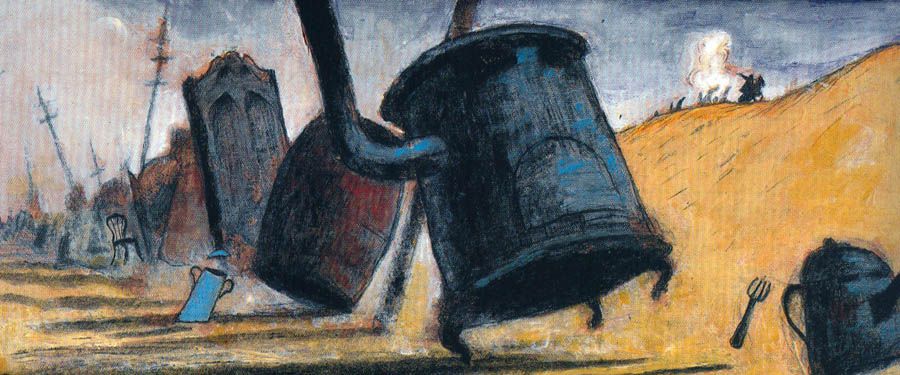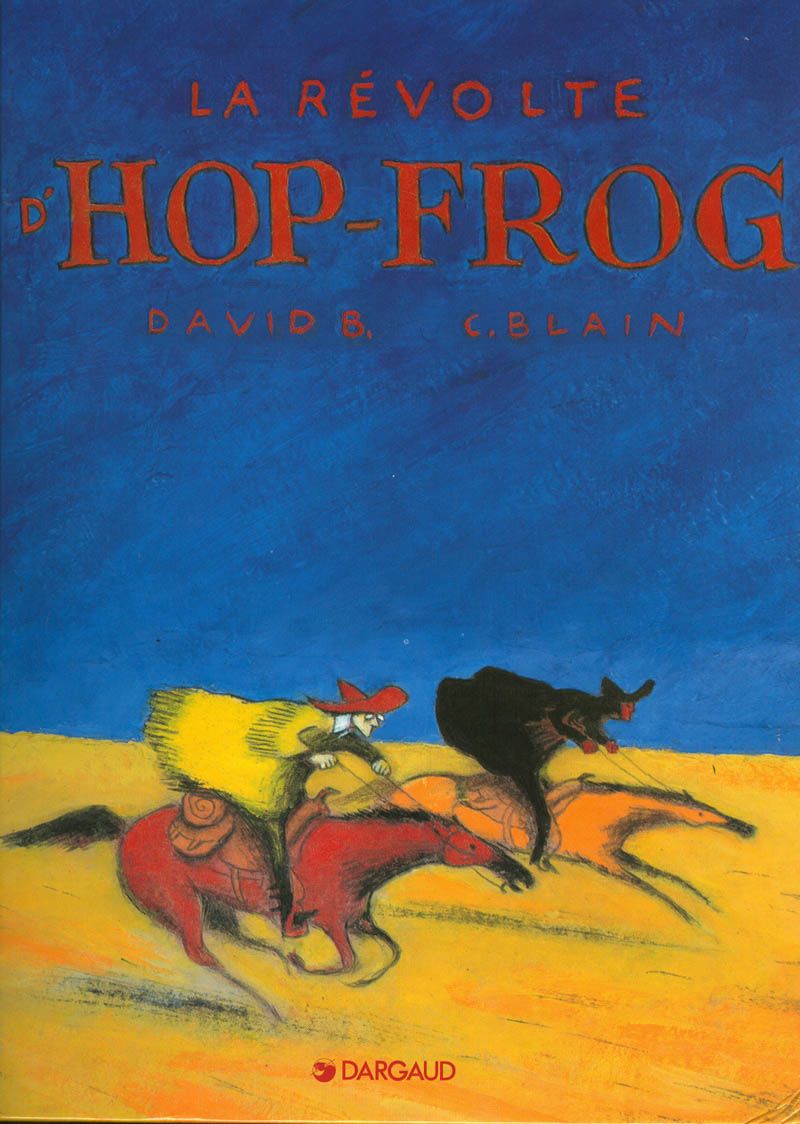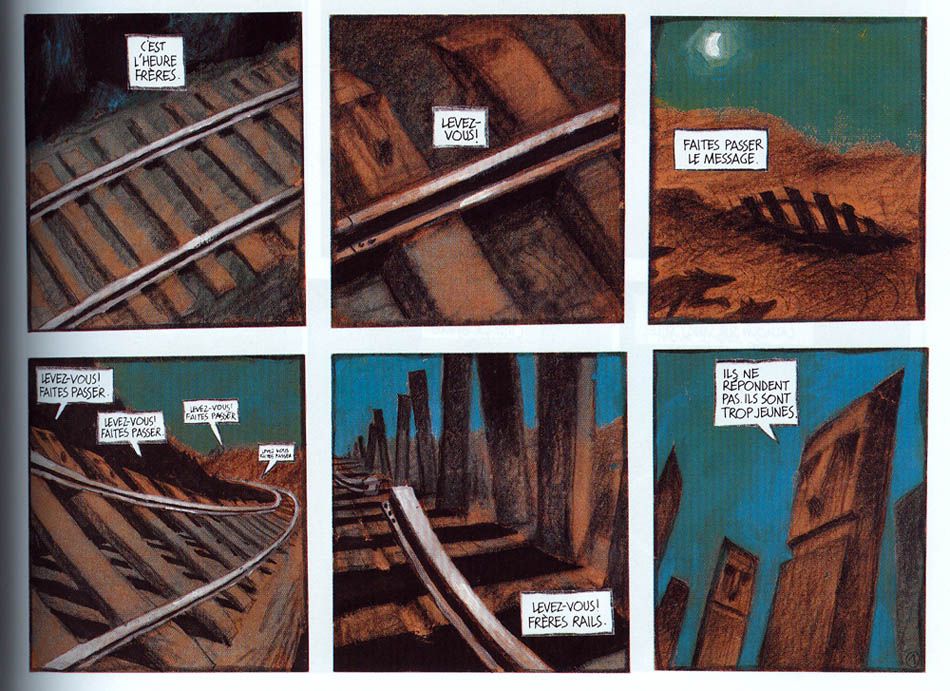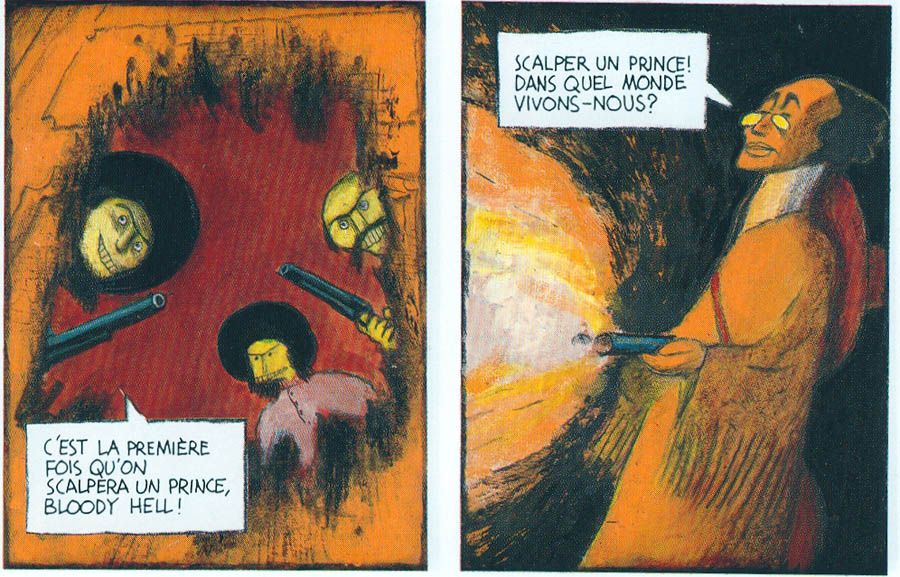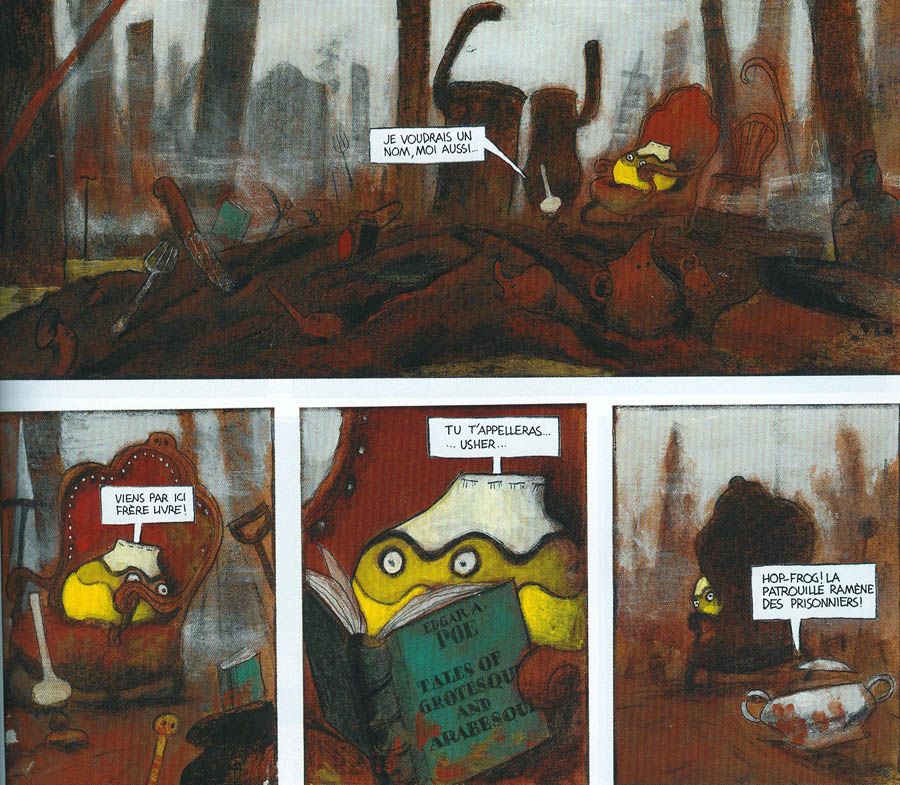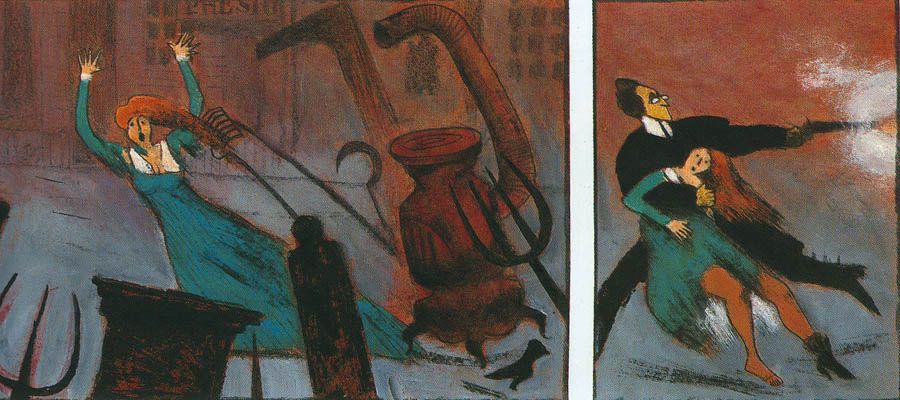Every so often I like to use this column to focus not just on the various American comics that have languished in uncollected obscurity for far too long, but to also examine great works found in other comics-loving countries like France and Japan that for reasons both frustrating and inscrutable have yet to arrive on our shores.
So this week I'm looking across the Atlantic to a 1997 graphic novel written by David B and drawn by Chris Blain, both French. Both names should at least ring a bell with the discerning indie reader, David B. having won well-deserved plaudits for his extraordinarily haunting memoir Epileptic, while Blain found his name on a number of top ten lists last year with First Second's release of his revisionist Western Gus and His Gang.
La Revolte d'Hop-Frog is a Western as well, though it bears little resemblance to Gus, however, or to any Western I've ever seen or read. It's more like The X-Files set in 19th Century Texas. Oh, it has plenty of gunfights for sure. And cowboys. And tons of Indians. The central plot, however, revolves around a number of talking teapots, guns, lamps,stoves and other inanimate objects gaining sentience and declaring all-out war on their previous owners.
The book opens with a picturesque shot of a rail path skirting somewhere through Texas, circa 1880. Suddenly, the wooden railroad ties start talking to each other. Then they rise up out of their dirt beds and start walking, or rather hopping, off to join "the others."
Clearly, we are not in traditional John Ford territory.
Meanwhile, in a nearby sleepy Texas town, Hiram Lowatt, Northern reporter for a periodical known as Secrets of Nature, has arrived, accompanied by his friend and servant Placido, a rather taciturn Comanche. He gets made fun of by the locals for his fringed jacket.
Elsewhere, a group of local Native Americans are planning a rebellion of some sort, as their leader believes a great uprising is coming that will usher in a new golden age. (I should note here that my French is absolutely horrible and for the most part I pieced together what the characters were saying via a humongous French-English dictionary).
The locals, meanwhile, think the Indians are responsible for a series of mysterious slayings that have been taking place out on the prairie. That isn't true, of course, and Lowatt pretty much immediately suspects supernatural foul play. Although he must kick a bit of ass before he can set about proving his theories.
Anyway, it turns out every single inanimate object, from the lowly fork to the massive armoire, has come to life and opted to engage in a mass revolution, slaughtering humans as payback for what they regard as unjust treatment. They are led by a small yellow and white pot called Hop-Frog. He likes to name his fellow objects by picking names out of books.
It's all very silly and comical, to be sure. And B. and Blain get a good deal of humorous mileage out of showing clocks and bric a brac attack their owners (the armoire, having killed everyone inside a house, wants to get out, but can't until the crowbar, pick axe and other tools widen the doorway for him). But there is also a surprisingly good deal of horror and even tragedy wound up in this tale as well. Hop-Frog is ridiculous, yes, but he's also a bit terrifying as well.
That shouldn't be too surprising if you're familiar with these authors' other works. For all its bizarre juxtapositions, we haven't strayed too far from traditional David B. territory. His short stories, particularly those produced in Mome and his recent book, Nocturnal Conspiracies, show an artist obsessed not just with dream-like images and narratives, but also with the notion of intrigue and machinations. In Epiliptic he portrays himself as a child as being obsessed with ancient wars and revolutions. This is just an absurdist rendering of that obsession.
Blain work here is stylistically quite different from what he later produced for Gus and books like his Isaac the Pirate. I'd almost call it borderline Fauvist since it seems to be influenced as much by traditional painters like Matisse as it is by contemporary cartoonists. The net effect, however, decidedly helps give it's dreamlike tone, and balances the comical aspects of the story with the more dramatic sequences.
David B. and Blain did one only more book starring Hiram Lowatt, Les Ogres, which I have not had the opportunity to glance at, let alone read. Certainly, based on what I've been able to translate here, the pair would seem like perfect additions to First Second or NBM's growing Eurocomics stable. I mean, it's about pot-bellied stoves and brooms attacking people in the wild west. What's not to love?

